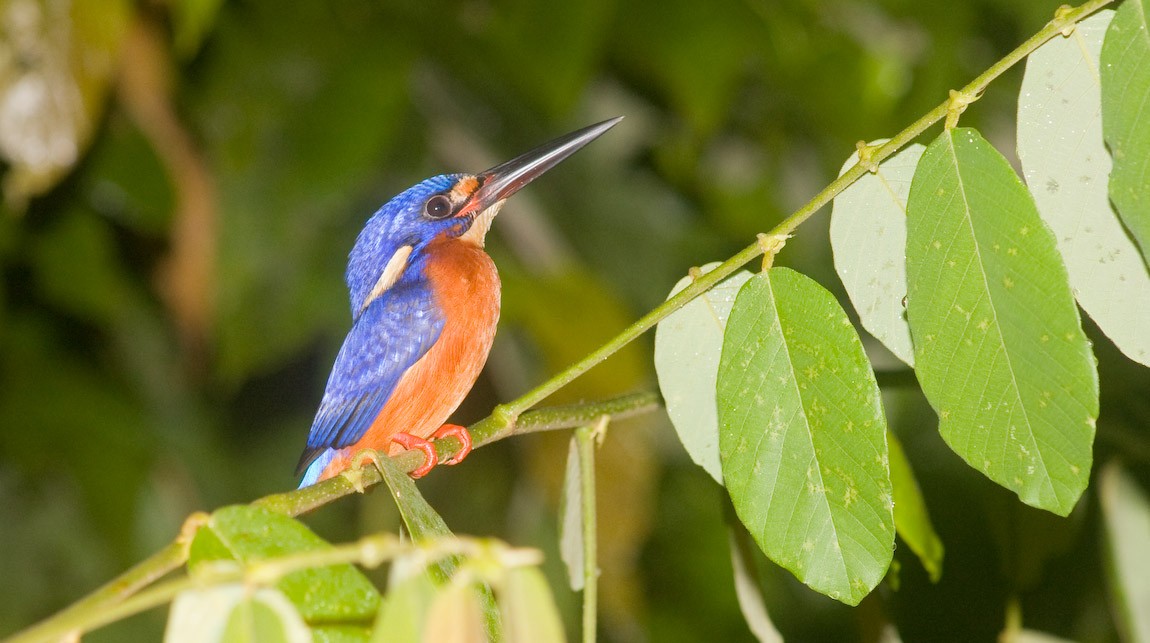Blue-eared Kingfisher
A species of Eurasian River Kingfishers Scientific name : Alcedo meninting Genus : Eurasian River Kingfishers
Blue-eared Kingfisher, A species of Eurasian River Kingfishers
Botanical name: Alcedo meninting
Genus: Eurasian River Kingfishers
Content
Description People often ask General Info
Description
This 16 centimetres (6.3 in) long kingfisher is almost identical to the common kingfisher (Alcedo atthis) but is distinguished by the blue ear coverts, darker and more intense cobalt-blue upperparts with richer rufous under parts. The juvenile blue-eared kingfisher has rufous ear-coverts as in the common kingfisher but it usually shows some mottling on the throat and upper breast which disappears when the bird reaches adulthood. Young birds have a reddish bill with whitish tips. 
Size
17 cm
Colors
Brown
Red
Blue
Orange
Cyan
Life Expectancy
4.4 years
Nest Placement
Cavity
Feeding Habits
Blue-eared Kingfisher primarily preys on crustaceans, fish, and insect larvae, employing skilled hunting techniques. Blue-eared Kingfisher showcases unique adaptations for catching grasshoppers and mantids, indicative of its dietary versatility.
Habitat
Blue-eared Kingfisher typically inhabits slow-flowing streams, creeks, and channels that are located in dense evergreen forests including wet deciduous and bamboo forests, as well as dense mangrove systems. It favors more secluded water bodies than those preferred by its relative A. atthis. These settings are often found in regions with forest edge, secondary forests, and sometimes extend to streams traversing through tree plantations. Blue-eared Kingfisher is generally found at altitudes up to 1000 m and across a broad geographical region comprising parts of South and Southeast Asia.
Dite type
Piscivorous
People often ask
General Info
Feeding Habits
Bird food type
Behavior
The blue-eared kingfisher is largely resident within its range. They usually perch on branches overhanging densely shaded streams before diving below to capture prey that includes crustaceans, dragonfly larvae and fish. Other insects including grasshoppers and mantids have been recorded. The breeding season in India is mainly May to June in northern India and January in southwestern India. The nest is a metre long tunnel in the bank of a forest stream where about five to seven white near spherical eggs are laid. 
Distribution Area
The range of this species stretches from India in the west, eastwards across Nepal, Bhutan and Bangladesh, and further into Myanmar, Thailand, Cambodia, Vietnam and Malaysia. The usual habitat is pools or streams in dense evergreen forest and sometimes mangroves, situated under 1,000 metres (3,300 ft) of altitude. 
Species Status
Not globally threatened.
